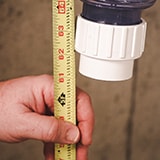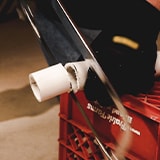
Sump Pump Installation Guide
Installing a replacement primary sump pump might sound like a task best left for the professionals, but it's actually an easy task that any homeowner can do.
With just a few hand tools, a bucket, and some PVC parts, you can have your replacement pump installed in less than an hour. You'll save money, and you won't have to wait around for a plumber.
Follow this step-by-step how-to guide and you'll have your replacement pump installed today, and not next week.
Reading the Manual
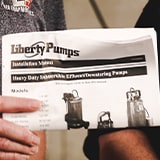
Before doing anything else, it's important to read all the instructions and warnings in your user manual. This will help you familiarize yourself with the different parts you'll be working with as well as the installation process.
Plus, the owner's manual will explain the type of pump you're installing and what types of accessories (like float switches, alarms, etc.) are compatible with your pump.
Before Installing Your Pump:
- Disconnect the power
- Check the distance and height of the outlet
- Never use extension cords
- Use a dedicated circuit
- Do not remove tags
- Don't run the pump dry
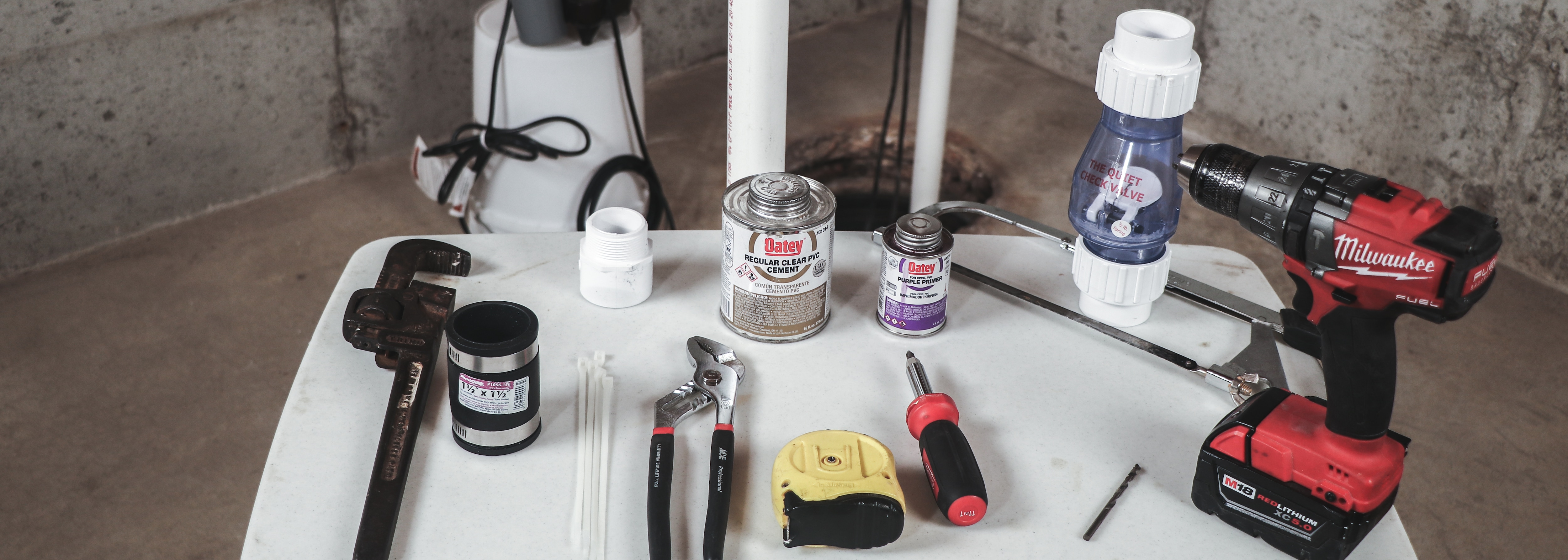
Recommended Tools for Installing a Sump Pump
- Drill with 3/16" bit
- Bucket
- Shop-Vac (optional for removing water)
- Primer & PVC cement
- Hacksaw
- Check valve
- Adjustable pliers
- Rubber coupling boot
- Adjustable pipe wrench
- Zip ties
- Gloves
- Rags/towels
- 1.5" Schedule 40 PVC pipe (10 ft.)
How to Remove Your Sump Pump
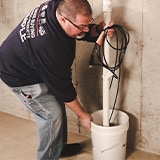 First, disconnect the power. Then, disconnect the check valve and let the water drain out. Remove the old pump and place in a bucket for more drainage. Clean out the pit and remove any visible debris.
First, disconnect the power. Then, disconnect the check valve and let the water drain out. Remove the old pump and place in a bucket for more drainage. Clean out the pit and remove any visible debris.
Make sure that the pit has a hard, level bottom (like bricks or concrete) for placing the new pump on. Never place a sump pump directly on earth or gravel because it can cause excessive impeller-wear or jamming.
How to Install a Sump Pump
Now it's time to replace your sump pump. Follow the steps below and watch the video above to make installation a breeze.
*Note: In our application shown, we use a glue-in check valve. If using a standard check-valve, then all you need to do is attach it using a rubber coupling boot with a screwdriver.
1. Attach Check Valve to Discharge Pipe
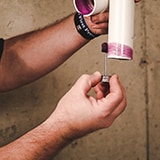 If using a glue-in check valve, use a primer first and prime the inside of the fitting and the outer edge of the discharge piping to ensure the glue will adhere with a strong bond. Then, slide the coupling over the piping before attaching the fitting to the discharge pipe.
If using a glue-in check valve, use a primer first and prime the inside of the fitting and the outer edge of the discharge piping to ensure the glue will adhere with a strong bond. Then, slide the coupling over the piping before attaching the fitting to the discharge pipe.
Finally,
use
PVC cement inside the fitting and attach it to the discharge pipe. Once you push the fitting on, twist slightly to lock the fitting on.
2. Take Your Measurements
Measure the diameter of your pit and ensure it is larger than 14 inches (18 inches is recommended), so your float switch will not get caught up on the walls of your pit, pump, or piping and risk not activating your pump.
Measure the depth of the pit, which should be at a minimum of 22 inches deep. Then, measure the distance from the bottom adapter of the check valve to the base of the pit. From there, you need to measure the height from the ground to the center of your pump's discharge pipe threading.
*Pro-Tip: you can pre-cut the PVC pipe to a few inches longer than this measurement using a hacksaw, to make it easy to make final cuts and measurements after lowering the pump into the pit.
3. Attach Adapter to PVC Pipe
Now it's time to glue the male-threaded adapter to the PVC pipe. First, attach the male adapter to one end of the pipe using the primer and PVC cement. Once attached, thread the adapter-end of the PVC pipe onto the sump pump using a wrench to tighten. Make sure you do not overtighten, or the fittings may crack.
4. Test the Sump Pump & Float
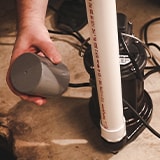 Make sure your pump and float are working before dropping your pump into the pit. Plug the pump cord into the float plug and into the outlet. Flip your float over and run the pump for no more than a few seconds to make sure it activates. Do not let the pump run dry.
Make sure your pump and float are working before dropping your pump into the pit. Plug the pump cord into the float plug and into the outlet. Flip your float over and run the pump for no more than a few seconds to make sure it activates. Do not let the pump run dry.
If you can hear the pump running, switch the float off again and grab your power drill. The next step is important: drilling the weep hole.

5. Drill the Weep Hole
Lean the pump at an angle to make things simple. Measure approximately 2 finger-widths above the adapter. Using a drill with a 3/16" bit, begin drilling and angle your drill down at about a 45-degree angle, creating a downward-facing weep hole for water drainage.
*Pro-Tip:
Drilling a weep hole is required to prevent damage caused by an air-lock in the pipe that causes the pump to run dry. If there is no hole, water below a check valve drains back into the pit and compresses the air left in the pipe, which could prevent water from leaving the pump the next time it tries to empty the basin.
6. Cut the PVC Piping
Take the measurements from earlier and cut the PVC pipe a few inches longer than the length you measured. Cut the pipe on a raised surface, using milk crates or something similar to lift the pipe off the ground.
After cutting, use a utility knife to deburr the frayed plastic bits so the surface of the pipe is smooth, which will eliminate the possibility of leaking.
7. Drop Pump Into the Pit
Now it's time to take the final measurements to make sure the discharge pipe will fit properly under the check valve. If you pre-cut, simply mark a line to the center of the bottom adapter of the check valve. Lay rags or towels out to prevent puddles of water in the work area. Remember to let the water drain first before you completely pull the pump out.
Then, remove the pump and cut using a hacksaw on the raised surface like before.
After the final cut is made, drop the pump back into the pit. It should be ready to be attached.
8. Attach Discharge Pipe to Check Valve
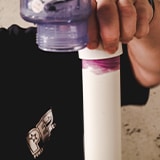 Attach the coupler to the top of the cut PVC pipe using the same technique: using primer and PVC cement. Make sure to slide the adapter for the bottom of the check valve over the coupler before you glue it to the discharge pipe.
Attach the coupler to the top of the cut PVC pipe using the same technique: using primer and PVC cement. Make sure to slide the adapter for the bottom of the check valve over the coupler before you glue it to the discharge pipe.
Then, attach the glued coupler to the pipe and align the discharge pipe and check valve. Slide the adapter up and hand-tighten the threading to the check valve on the top and bottom. Make sure not to overtighten or else the fittings may crack.
9. Test the System
After making sure everything is tightened and the float switch can freely move around in the pit, plug the system in and test the pump.
*Remember to connect the pump plug into the back of the float switch plug (piggyback) before plugging into the outlet.
If there's not enough water in the pit, simply use a bucket to fill the pit with water for testing. Check to see that water is passing through the check valve properly and that the check valve closes completely when the system turns off.
10. Secure the Electrical Cords
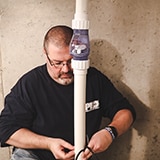
*Important:
Using Zip ties, secure the wiring of the pump and float switch cords to the
discharge pipe, making sure that the wires do not touch each other at all. Use as many zip ties as needed.
In addition, make sure the top of the wiring is zip-tied below the height of the outlet it's plugging into, so if the wiring becomes wet for any reason, the water does not travel down the wire and into the outlet.
Completing Your System
Now that you have successfully installed a replacement sump pump (nice work!), you can rest easy knowing that you did it yourself and did it properly-all without the help of a plumber. There are a few additional things you can do to ensure you never have to worry about your basement flooding again.
Sump pump alarms
come in all shapes and sizes and are meant to notify you of when
the water reaches a certain height or the pump is unable to remove the water fast enough. For an extra layer of comfort, you can even upgrade to a smart sump pump alarm
that will send alerts directly to your phone, no matter where you are.
When all else fails, a battery backup sump pump
will save the day. They virtually double the power of your system in the pit to keep up with flooding waters draining into your basement. Some people that have had flooding issues in the past may even decide to go with the hassle-free solution: a
combination sump pump system
that successfully combines a primary pump and backup pump system in one convenient package.
![]()
NEXT: Upgrade Your System With Smart Technology

